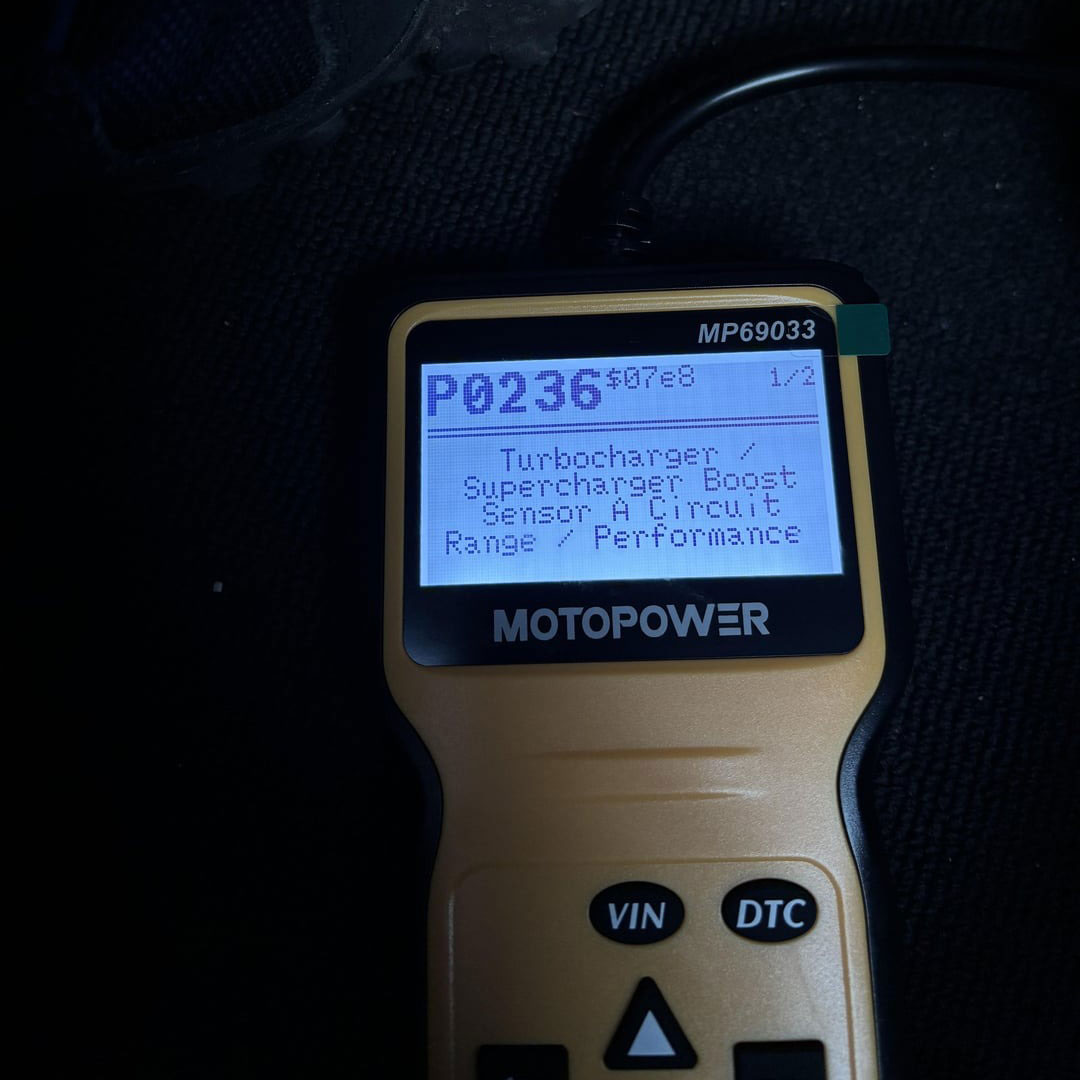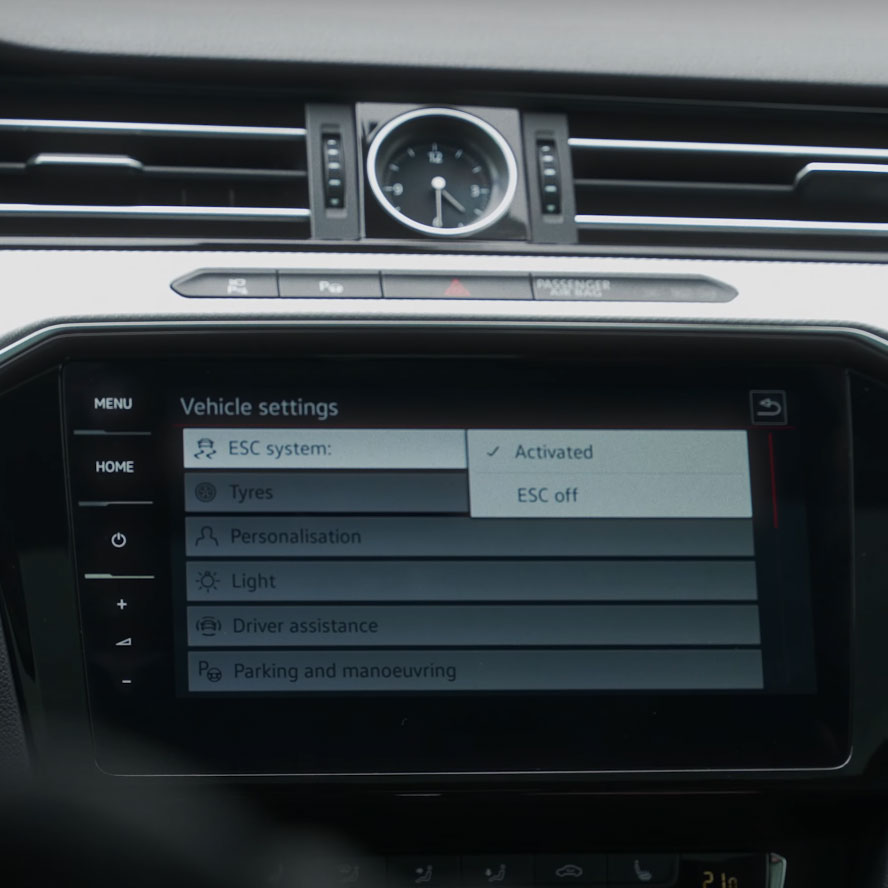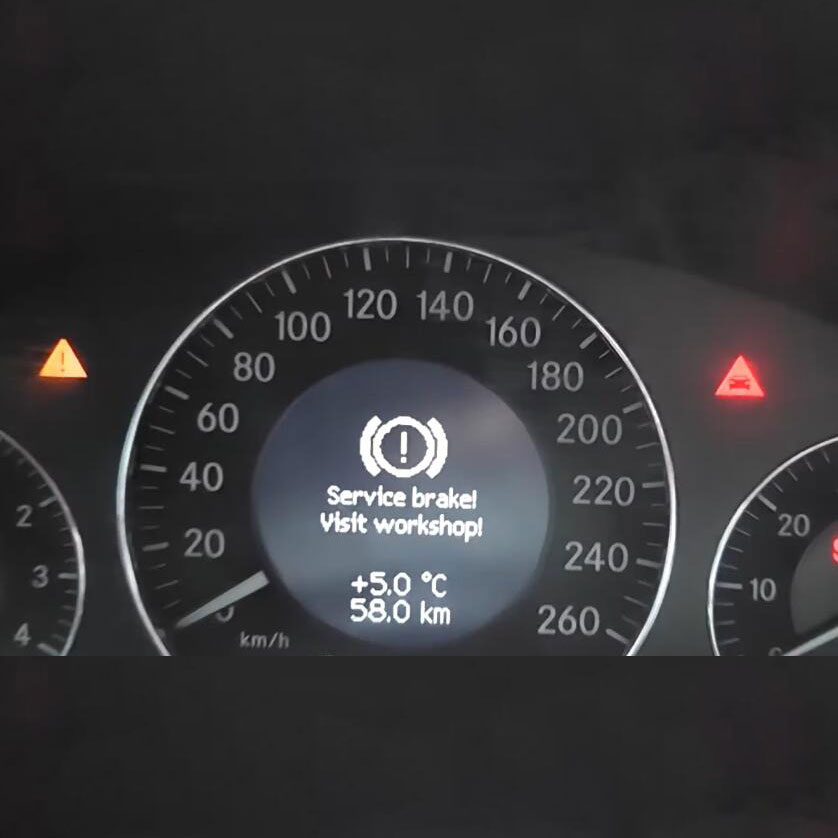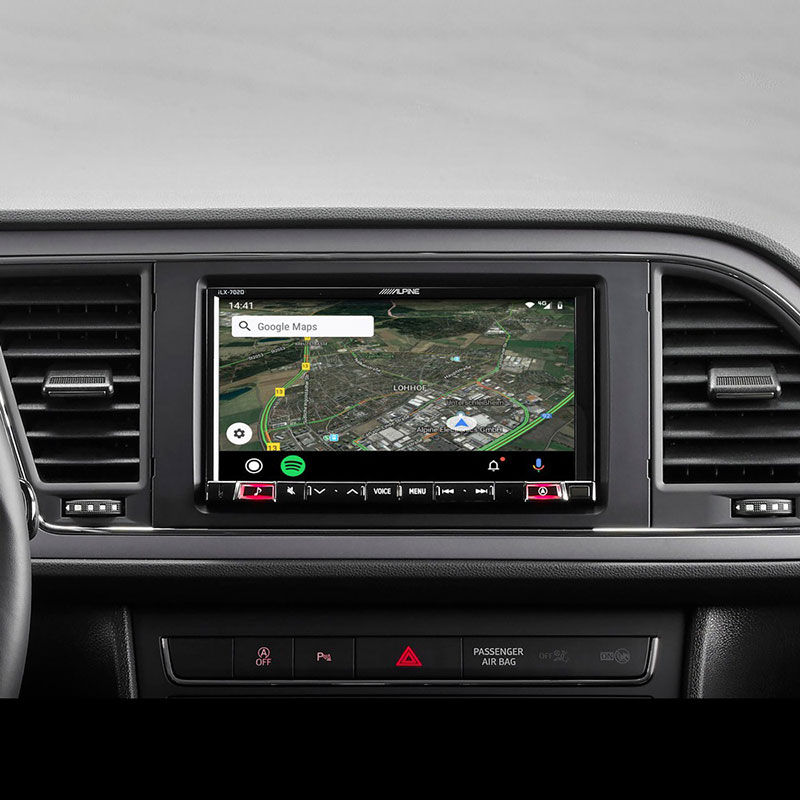
Master Mercedes-Benz Alignment Codes: Your Expert Guide
Contents
- 1. Understanding Mercedes-Benz Alignment Codes
- 1.1. Importance of Proper Wheel Alignment
- 1.2. Types of Alignment Codes
- 1.3. Symptoms of Misalignment
- 2. Decoding Mercedes-Benz Chassis Codes
- 2.1. Understanding Chassis Prefixes
- 2.2. Common Mercedes-Benz Chassis Codes
- 2.3. How to Find Your Chassis Code
- 3. Step-by-Step Guide to Finding Mercedes-Benz Alignment Specs
- 3.1. Using Online Databases
- 3.2. Consulting Your Local Mercedes-Benz Dealership
- 3.3. Checking Aftermarket Repair Manuals
- 3.4. Verifying Information
- 4. Common Mercedes-Benz Alignment Issues and Troubleshooting
- 4.1. Steering Wheel Vibration
- 4.2. Pulling to One Side
- 4.3. Tire Wear Problems
- 4.4. Corrective Actions
- 5. Tools Needed for Mercedes-Benz Wheel Alignment
- 5.1. Alignment Rack
- 5.2. Wheel Alignment Machine
- 5.3. Alignment Tools
- 5.4. Diagnostic Scan Tool
- 6. Step-by-Step Mercedes-Benz Wheel Alignment Process
- 6.1. Preparation
- 6.2. Measurement
- 6.3. Adjustment
- 6.4. Finalization
- 7. Advanced Alignment Techniques for Mercedes-Benz
- 7.1. Thrust Angle Adjustment
- 7.2. Corner Balancing
- 7.3. Using Shims for Precise Adjustments
- 7.4. Dynamic Alignment
- 8. The Role of Alignment in Mercedes-Benz Safety Systems
- 8.1. Electronic Stability Program (ESP)
- 8.2. Anti-Lock Braking System (ABS)
- 8.3. Adaptive Cruise Control (ACC)
- 8.4. Lane Keeping Assist (LKA)
- 9. Maintenance Tips for Keeping Your Mercedes-Benz Aligned
- 9.1. Regular Alignment Checks
- 9.2. Tire Rotation
- 9.3. Avoid Road Hazards
- 9.4. Suspension Inspections
- 9.5. Promptly Address Issues
- 10. Why Choose AutoExplain.com for Your Mercedes-Benz Alignment Needs
- 10.1. Expert Technicians
- 10.2. Remote Diagnostic Services
- 10.3. Advanced Programming and Coding
- 10.4. Cost-Effective Solutions
- 10.5. Customer Satisfaction
- 11. Benefits of Remote Support for Alignment Issues
- 11.1. Convenience
- 11.2. Speed
- 11.3. Expertise at Your Fingertips
- 11.4. Cost Savings
- 11.5. Real-Time Guidance
- 12. Success Stories: Real-World Alignment Solutions by AutoExplain.com
- 12.1. Case Study 1: Uneven Tire Wear on a W205 C-Class
- 12.2. Case Study 2: Pulling to One Side on a W213 E-Class
- 12.3. Case Study 3: ESP Malfunction on a X253 GLC-Class
- 13. Latest Advancements in Mercedes-Benz Alignment Technology
- 13.1. Active Body Control (ABC)
- 13.2. Magic Body Control
- 13.3. Adaptive Damping Systems
- 13.4. Electric Power Steering (EPS)
- 14. Future Trends in Wheel Alignment for Mercedes-Benz
- 14.1. Artificial Intelligence (AI)
- 14.2. Augmented Reality (AR)
- 14.3. Wireless Alignment Systems
- 14.4. Predictive Alignment Maintenance
- 15. FAQ: Addressing Common Questions About Mercedes-Benz Alignment Codes
- 15.1. What is a Mercedes-Benz alignment code?
- 15.2. Where can I find my Mercedes-Benz alignment codes?
- 15.3. How often should I check my wheel alignment?
- 15.4. What are the symptoms of misalignment?
- 15.5. Can misalignment affect my Mercedes-Benz safety systems?
- 15.6. What tools are needed for a Mercedes-Benz wheel alignment?
- 15.7. What is thrust angle adjustment?
- 15.8. What is corner balancing?
- 15.9. How can AutoExplain.com help with my alignment needs?
- 15.10. How do I contact AutoExplain.com for remote support?
Mercedes-benz Alignment Codes are critical for maintaining optimal vehicle performance and safety. AutoExplain.com provides expert diagnostics, programming, and remote software installation services to resolve automotive issues effectively, ensuring your Mercedes-Benz runs smoothly. Discover how to interpret and utilize these codes with our comprehensive guide, enhancing vehicle longevity and performance through proper wheel alignment and vehicle diagnostics.
1. Understanding Mercedes-Benz Alignment Codes
Mercedes-Benz alignment codes are specific alphanumeric identifiers that detail the precise angles and settings for your vehicle’s wheel alignment. These codes ensure that your car’s wheels are correctly aligned, which is crucial for optimal handling, tire wear, and overall driving safety. Proper alignment guarantees that all wheels are parallel to each other and perpendicular to the road surface. AutoExplain.com offers advanced diagnostic services to accurately interpret these codes and provide tailored solutions for your Mercedes-Benz.
1.1. Importance of Proper Wheel Alignment
Correct wheel alignment is essential for several reasons:
- Extended Tire Life: Misalignment causes uneven tire wear, leading to premature replacement.
- Improved Fuel Efficiency: Proper alignment reduces rolling resistance, saving fuel.
- Enhanced Handling: Correct alignment ensures precise steering and stability.
- Increased Safety: Properly aligned wheels improve braking performance and overall vehicle control.
1.2. Types of Alignment Codes
Mercedes-Benz alignment codes are typically based on the vehicle’s chassis number and model. These codes specify the ideal angles for:
- Camber: The angle of the wheel relative to the vertical axis.
- Caster: The angle of the steering axis relative to the vertical axis.
- Toe: The angle of the wheel relative to the vehicle’s centerline.
- Thrust Angle: The angle of the rear axle relative to the vehicle’s centerline.
Knowing these codes allows technicians to adjust the alignment precisely to factory specifications.
1.3. Symptoms of Misalignment
Recognizing the symptoms of misalignment can help you address issues early and prevent further damage:
- Uneven Tire Wear: One side of the tire wears faster than the other.
- Pulling to One Side: The vehicle drifts to the left or right while driving straight.
- Steering Wheel Off-Center: The steering wheel is not centered when driving straight.
- Vibrations: Shaking or vibrations in the steering wheel or vehicle.
- Squealing Tires: Unusual tire noise during turns.
If you notice any of these symptoms, it’s essential to have your Mercedes-Benz inspected by a professional, like those at AutoExplain.com, to ensure accurate diagnosis and repair.
2. Decoding Mercedes-Benz Chassis Codes
Mercedes-Benz chassis codes can be confusing, but understanding them is crucial for identifying the correct alignment specifications for your vehicle. Each code provides valuable information about the model, wheelbase, and body style, allowing for precise alignment adjustments. AutoExplain.com’s expert technicians are adept at decoding these chassis codes to ensure accurate and effective service.
2.1. Understanding Chassis Prefixes
Mercedes-Benz uses specific prefixes to denote different vehicle types:
- W: Short wheelbase sedans and SUVs (most common).
- V: Long wheelbase sedans (primarily S-Class models).
- R: Two-seater roadsters (SL and SLK/SLC models).
- C: Coupes with a fixed hardtop.
- S: Station wagons (typically E-Class models).
- A: Cabriolet cars.
- X: SUVs designed from an existing platform.
Understanding these prefixes helps you narrow down the specific chassis code for your vehicle.
2.2. Common Mercedes-Benz Chassis Codes
Here are some common Mercedes-Benz chassis codes and their corresponding models:
- W205: C-Class (2015-2021)
- W213: E-Class (2017-Present)
- W222: S-Class (2014-2020)
- X253: GLC-Class (2016-2021)
- W166: GLE-Class (2012-2018)
- X166: GLS-Class (2012-2019)
Knowing the chassis code for your Mercedes-Benz model helps in identifying the correct alignment specifications.
2.3. How to Find Your Chassis Code
You can typically find your Mercedes-Benz chassis code in the following locations:
- Vehicle Identification Number (VIN): The chassis code is often embedded within the VIN.
- Door Jamb Sticker: A sticker on the driver’s side door jamb.
- Vehicle Registration: Listed on your vehicle registration documents.
- Owner’s Manual: Found in the vehicle’s owner’s manual.
Once you have located your chassis code, you can use it to find the specific alignment codes required for your vehicle.
3. Step-by-Step Guide to Finding Mercedes-Benz Alignment Specs
Finding the correct alignment specs for your Mercedes-Benz can seem daunting, but with the right resources, it’s manageable. This section provides a step-by-step guide to help you locate the precise alignment specifications for your vehicle, ensuring accurate adjustments. AutoExplain.com offers support to help you find and interpret these specifications.
3.1. Using Online Databases
Several online databases provide Mercedes-Benz alignment specifications:
- Mitchell 1: A comprehensive database used by many professional technicians.
- ALLDATA: Another popular database with detailed vehicle information.
- Mercedes-Benz WIS (Workshop Information System): The official Mercedes-Benz resource for technical information.
These databases typically require a subscription, but they offer the most accurate and up-to-date alignment specifications.
3.2. Consulting Your Local Mercedes-Benz Dealership
Your local Mercedes-Benz dealership can provide alignment specifications for your vehicle. Dealership technicians have access to the latest information and can ensure that the alignment is performed to factory standards.
3.3. Checking Aftermarket Repair Manuals
Aftermarket repair manuals, such as those from Haynes or Chilton, often include alignment specifications for various Mercedes-Benz models. These manuals are a cost-effective alternative to professional databases, but always verify the information’s accuracy.
3.4. Verifying Information
Regardless of the source, it’s crucial to verify the alignment specifications. Compare the information from multiple sources to ensure accuracy. Pay attention to any notes or special instructions that may apply to your vehicle.
4. Common Mercedes-Benz Alignment Issues and Troubleshooting
Even with precise alignment codes, various issues can arise. Understanding common problems and how to troubleshoot them is essential for maintaining optimal performance. AutoExplain.com’s remote support can help diagnose and resolve these issues quickly and effectively.
4.1. Steering Wheel Vibration
Steering wheel vibration is a common symptom of misalignment. It can be caused by:
- Unbalanced Tires: Uneven weight distribution in the tires.
- Bent Wheels: Damage to the wheels affecting their balance.
- Worn Suspension Components: Loose or worn ball joints, tie rod ends, or control arm bushings.
- Incorrect Toe Angle: Improper toe angle causing instability.
4.2. Pulling to One Side
If your Mercedes-Benz pulls to one side, it may indicate:
- Uneven Tire Pressure: Differences in tire pressure can cause pulling.
- Brake Issues: A dragging brake caliper can cause the vehicle to pull.
- Camber or Caster Problems: Incorrect camber or caster angles.
- Road Crown: Roads are often sloped for drainage, causing a slight pull.
4.3. Tire Wear Problems
Uneven tire wear is a significant indicator of alignment issues:
- Feathering: Wear pattern with sharp edges on one side of the tire.
- Cupping: Scalloped wear pattern around the tire circumference.
- Edge Wear: Wear concentrated on the inner or outer edge of the tire.
- Center Wear: Wear concentrated in the center of the tire.
4.4. Corrective Actions
Addressing these issues involves:
- Tire Balancing: Balancing the tires to ensure even weight distribution.
- Wheel Repair or Replacement: Repairing or replacing damaged wheels.
- Suspension Component Replacement: Replacing worn suspension parts.
- Brake Service: Servicing or replacing faulty brake components.
- Wheel Alignment Adjustment: Adjusting camber, caster, and toe angles to specification.
5. Tools Needed for Mercedes-Benz Wheel Alignment
Performing a wheel alignment on a Mercedes-Benz requires specialized tools and equipment. Having the right tools ensures accurate adjustments and prevents damage to vehicle components. AutoExplain.com provides guidance on the tools needed for effective wheel alignment.
5.1. Alignment Rack
An alignment rack is a platform that holds the vehicle level during the alignment process. It allows technicians to make precise measurements and adjustments.
5.2. Wheel Alignment Machine
A wheel alignment machine uses sensors and software to measure the angles of the wheels. Modern alignment machines provide real-time feedback and guidance during the adjustment process. Common types include:
- Laser Alignment Machines: Use laser beams to measure wheel angles.
- 3D Alignment Machines: Use cameras to create a three-dimensional model of the wheel positions.
5.3. Alignment Tools
Specific alignment tools are needed to make adjustments to camber, caster, and toe angles:
- Wrench Set: Metric wrench set for adjusting bolts and nuts.
- Socket Set: Metric socket set for removing and tightening components.
- Camber/Caster Adjustment Tools: Special tools for adjusting camber and caster angles.
- Toe Adjustment Tools: Tools for adjusting toe angles, such as tie rod adjustment sleeves.
5.4. Diagnostic Scan Tool
A diagnostic scan tool is essential for resetting the Electronic Stability Program (ESP) and other electronic systems after an alignment. It ensures that the vehicle’s systems are properly calibrated.
6. Step-by-Step Mercedes-Benz Wheel Alignment Process
Performing a wheel alignment on a Mercedes-Benz involves a systematic process to ensure accuracy and effectiveness. Follow these steps to achieve optimal alignment results. AutoExplain.com’s technicians can guide you through each step with remote support.
6.1. Preparation
- Inspect the Vehicle: Check for any worn or damaged suspension components, tires, or wheels.
- Load Compensation: If needed, load the vehicle with specified weight for accurate readings.
- Mount Alignment Heads: Attach alignment heads or sensors to each wheel.
6.2. Measurement
- Initial Readings: Use the alignment machine to take initial measurements of camber, caster, and toe angles.
- Compare to Specifications: Compare the measurements to the factory specifications for your vehicle.
6.3. Adjustment
- Camber Adjustment: Adjust camber angles by loosening and tightening bolts on the upper control arms or strut mounts.
- Caster Adjustment: Adjust caster angles using shims or adjustable control arms.
- Toe Adjustment: Adjust toe angles by rotating the tie rod adjustment sleeves.
6.4. Finalization
- Re-measure: After each adjustment, re-measure the angles to ensure they are within specification.
- Test Drive: Perform a test drive to check for pulling, vibration, or other issues.
- Electronic Reset: Use a diagnostic scan tool to reset the ESP and other electronic systems.
7. Advanced Alignment Techniques for Mercedes-Benz
For complex alignment issues, advanced techniques may be necessary. These techniques require specialized knowledge and tools, and AutoExplain.com’s expert technicians are equipped to handle them.
7.1. Thrust Angle Adjustment
The thrust angle is the angle of the rear axle relative to the vehicle’s centerline. Adjusting the thrust angle ensures that the rear wheels are properly aligned, which is essential for straight tracking.
7.2. Corner Balancing
Corner balancing involves adjusting the ride height at each corner of the vehicle to achieve optimal weight distribution. This technique is often used on performance vehicles to improve handling.
7.3. Using Shims for Precise Adjustments
Shims are thin metal plates used to fine-tune alignment angles. They are placed between suspension components to make small adjustments to camber and caster.
7.4. Dynamic Alignment
Dynamic alignment involves making alignment adjustments while the vehicle is in motion. This technique requires specialized equipment and expertise and is typically used on racing vehicles.
8. The Role of Alignment in Mercedes-Benz Safety Systems
Proper wheel alignment is integral to the performance of Mercedes-Benz safety systems. Misalignment can negatively impact these systems, compromising vehicle safety. AutoExplain.com ensures that alignment is correctly set to support optimal safety system functionality.
8.1. Electronic Stability Program (ESP)
The ESP relies on accurate wheel alignment to function correctly. Misalignment can cause the ESP to activate unnecessarily or fail to activate when needed, reducing vehicle stability.
8.2. Anti-Lock Braking System (ABS)
The ABS uses wheel speed sensors to prevent wheel lockup during braking. Misalignment can affect the accuracy of these sensors, compromising the ABS’s effectiveness.
8.3. Adaptive Cruise Control (ACC)
ACC systems use radar and cameras to maintain a set distance from the vehicle ahead. Misalignment can affect the accuracy of these sensors, causing the ACC to malfunction.
8.4. Lane Keeping Assist (LKA)
LKA systems use cameras to monitor the vehicle’s position within its lane. Misalignment can cause the LKA to misinterpret lane markings, leading to incorrect steering corrections.
9. Maintenance Tips for Keeping Your Mercedes-Benz Aligned
Maintaining proper wheel alignment requires regular maintenance and attention. Follow these tips to keep your Mercedes-Benz aligned and performing at its best. AutoExplain.com offers maintenance support to help you stay on track.
9.1. Regular Alignment Checks
Schedule regular alignment checks, typically every 6,000 to 12,000 miles or as recommended in your owner’s manual.
9.2. Tire Rotation
Rotate your tires regularly to ensure even wear. This can help prevent alignment issues from developing.
9.3. Avoid Road Hazards
Avoid potholes, curbs, and other road hazards that can damage your wheels and suspension.
9.4. Suspension Inspections
Inspect your suspension components regularly for wear or damage. Replace any worn parts promptly.
9.5. Promptly Address Issues
If you notice any symptoms of misalignment, such as pulling or uneven tire wear, address the issue promptly.
10. Why Choose AutoExplain.com for Your Mercedes-Benz Alignment Needs
AutoExplain.com offers specialized services to address all your Mercedes-Benz alignment needs. Our remote diagnostic and programming services provide expert support wherever you are.
10.1. Expert Technicians
Our team consists of highly skilled Mercedes-Benz technicians with extensive experience in alignment and suspension systems.
10.2. Remote Diagnostic Services
We offer remote diagnostic services to quickly identify and resolve alignment issues, saving you time and money.
10.3. Advanced Programming and Coding
We provide advanced programming and coding services to ensure that your Mercedes-Benz’s electronic systems are properly calibrated after an alignment.
10.4. Cost-Effective Solutions
Our services are competitively priced, offering cost-effective solutions without compromising on quality.
10.5. Customer Satisfaction
We are committed to providing excellent customer service and ensuring your complete satisfaction.
11. Benefits of Remote Support for Alignment Issues
Remote support offers numerous benefits for diagnosing and resolving alignment issues on your Mercedes-Benz. AutoExplain.com leverages these advantages to provide efficient and effective service.
11.1. Convenience
Remote support allows you to receive expert assistance without having to visit a repair shop.
11.2. Speed
Remote diagnostics and programming can be performed quickly, reducing downtime.
11.3. Expertise at Your Fingertips
Access our team of skilled Mercedes-Benz technicians from anywhere, ensuring expert service.
11.4. Cost Savings
Remote support can reduce the cost of diagnostics and repairs by eliminating the need for in-person visits.
11.5. Real-Time Guidance
Receive real-time guidance and support during the alignment process, ensuring accurate adjustments.
12. Success Stories: Real-World Alignment Solutions by AutoExplain.com
AutoExplain.com has a proven track record of providing successful alignment solutions for Mercedes-Benz vehicles. Here are a few real-world success stories.
12.1. Case Study 1: Uneven Tire Wear on a W205 C-Class
A customer with a W205 C-Class experienced uneven tire wear and contacted AutoExplain.com. Our remote diagnostic service identified incorrect toe angles as the cause. We provided step-by-step guidance to adjust the toe angles to specification, resolving the issue and extending tire life.
12.2. Case Study 2: Pulling to One Side on a W213 E-Class
A customer with a W213 E-Class reported the vehicle pulling to one side. Our remote support team determined that incorrect camber angles were the problem. We remotely programmed the vehicle’s alignment settings to correct the camber, restoring proper handling and stability.
12.3. Case Study 3: ESP Malfunction on a X253 GLC-Class
A customer with an X253 GLC-Class experienced an ESP malfunction after a recent alignment. AutoExplain.com used a diagnostic scan tool to reset the ESP and calibrate the system, resolving the issue and restoring vehicle safety.
13. Latest Advancements in Mercedes-Benz Alignment Technology
Mercedes-Benz continuously introduces new technologies to improve vehicle alignment and handling. Staying up-to-date with these advancements is essential for providing effective service. AutoExplain.com keeps abreast of the latest technological developments.
13.1. Active Body Control (ABC)
ABC is an advanced suspension system that uses hydraulic actuators to control body roll and pitch. Proper alignment is essential for the ABC to function correctly.
13.2. Magic Body Control
Magic Body Control uses cameras to scan the road ahead and adjust the suspension in real-time, providing a smooth and comfortable ride. Proper alignment ensures the cameras are accurately calibrated.
13.3. Adaptive Damping Systems
Adaptive damping systems adjust the damping force of the shock absorbers based on road conditions and driving style. Proper alignment ensures the system responds correctly.
13.4. Electric Power Steering (EPS)
EPS systems provide variable steering assistance based on vehicle speed and driving conditions. Proper alignment is essential for the EPS to function correctly and provide optimal steering feel.
14. Future Trends in Wheel Alignment for Mercedes-Benz
The field of wheel alignment is continuously evolving, with new technologies and techniques emerging regularly. Here are some future trends to watch for.
14.1. Artificial Intelligence (AI)
AI-powered alignment systems can automatically diagnose and correct alignment issues, reducing the need for manual adjustments.
14.2. Augmented Reality (AR)
AR technology can provide technicians with real-time visual guidance during the alignment process, improving accuracy and efficiency.
14.3. Wireless Alignment Systems
Wireless alignment systems eliminate the need for cables and wires, making the alignment process more convenient and efficient.
14.4. Predictive Alignment Maintenance
Predictive maintenance systems can use data analytics to identify potential alignment issues before they occur, allowing for proactive maintenance.
15. FAQ: Addressing Common Questions About Mercedes-Benz Alignment Codes
Here are some frequently asked questions about Mercedes-Benz alignment codes and their answers.
15.1. What is a Mercedes-Benz alignment code?
An alignment code is a specific alphanumeric identifier that details the precise angles and settings for your vehicle’s wheel alignment.
15.2. Where can I find my Mercedes-Benz alignment codes?
You can find your alignment codes in online databases, at your local Mercedes-Benz dealership, or in aftermarket repair manuals.
15.3. How often should I check my wheel alignment?
You should check your wheel alignment every 6,000 to 12,000 miles or as recommended in your owner’s manual.
15.4. What are the symptoms of misalignment?
Symptoms include uneven tire wear, pulling to one side, a steering wheel off-center, and vibrations.
15.5. Can misalignment affect my Mercedes-Benz safety systems?
Yes, misalignment can negatively impact safety systems like ESP, ABS, ACC, and LKA.
15.6. What tools are needed for a Mercedes-Benz wheel alignment?
Tools include an alignment rack, wheel alignment machine, wrench set, socket set, and diagnostic scan tool.
15.7. What is thrust angle adjustment?
Thrust angle adjustment ensures the rear wheels are properly aligned with the vehicle’s centerline, which is essential for straight tracking.
15.8. What is corner balancing?
Corner balancing involves adjusting the ride height at each corner of the vehicle to achieve optimal weight distribution, improving handling.
15.9. How can AutoExplain.com help with my alignment needs?
AutoExplain.com offers expert technicians, remote diagnostic services, advanced programming, and cost-effective solutions for all your Mercedes-Benz alignment needs.
15.10. How do I contact AutoExplain.com for remote support?
You can contact AutoExplain.com via WhatsApp at +1(936)2896695 or email at [email protected] for remote support.
Maintaining proper wheel alignment is crucial for the performance, safety, and longevity of your Mercedes-Benz. By understanding alignment codes, recognizing common issues, and following maintenance tips, you can ensure your vehicle stays aligned and performs at its best. For expert assistance, contact AutoExplain.com for remote diagnostic and programming services tailored to your Mercedes-Benz. Our team of skilled technicians is ready to provide the support you need to keep your vehicle running smoothly. Don’t wait until misalignment causes costly damage; reach out to AutoExplain.com today for proactive maintenance and expert service.
Ensure your Mercedes-Benz performs at its best. Contact AutoExplain.com for expert remote support via WhatsApp at +1(936)2896695 or email at [email protected]. Visit our website at AutoExplain.com for more information. Our office is located at 4590 Angus Road, New York, United States.


How to Deactivate ESC in Volkswagen, Audi, Skoda, or SEAT

Mercedes Benz ‘Service Brake Visit Workshop’ Warning? Here’s What Dealers Don’t Tell You!

How to Perform Seat Navigation Update? – A Comprehensive Guide for Technicians






